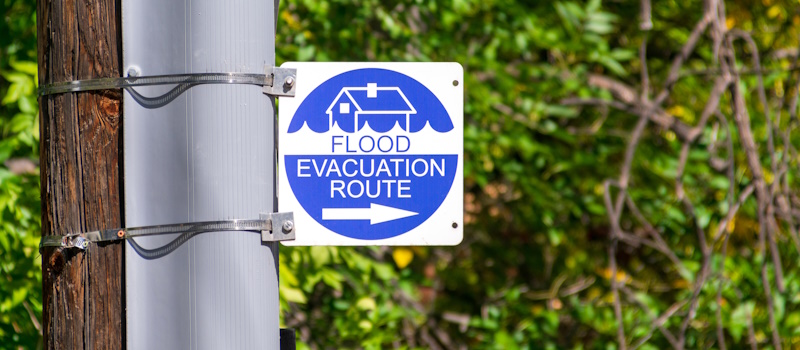Flood Preparation: Where and When to Evacuate
Flood Preparation: Where and When to Evacuate

Flood Preparation: Where and When to Evacuate
From 1908 to 2022, inland flooding caused $177.9 billion in damages in the United States. Along with damaging property, floodwaters can also present a serious safety risk, and it's always important to take proper precautions whenever there is a chance of heavy flooding in your area.
But how do you know when it's time to evacuate? And if you do decide to evacuate, where should you go? To help you keep yourself and your family safe, let's explore the answers to these two fundamental flood preparation questions.
When to Evacuate From a Flood
The simplest way to know when it is time to evacuate during any dangerous weather event is to listen for evacuation orders from your local government. According to Weather.gov, evacuation orders issued due to flooding should always be taken seriously and obeyed immediately. Listening to radio or television for updates can help you stay informed and ensure you are aware of any evacuation orders.
Of course, you don't have to wait for an evacuation order to take your family somewhere safer. If your home is especially prone to flooding or you have any reason to feel you are in danger, there's nothing wrong with erring on the side of caution.
If you have time, it's a good idea to disconnect utilities and appliances before evacuating your home. You should also assemble an evacuation kit that includes things such as bottled water, snacks, and first aid.
Where to Evacuate From a Flood
According to FEMA guidance, anyone evacuating from a flood should move to a higher elevation away from flood-prone areas. Be sure to avoid areas such as streams, drainage channels, canyons, and even dips in the road, as these areas can often flood swiftly and unexpectedly. If necessary, you can climb as high as possible on a sturdy object or structure to further escape rising floodwaters.
As you are evacuating from a flood, avoid driving through any standing water too deep to see the road beneath; most flood deaths occur in vehicles, so you must be extra cautious anytime you are on the road during heavy rains or flooding.
How to Protect Your Home With Flood Insurance
Having a detailed evacuation plan is vital for keeping yourself and your family safe from flooding, but what about your home and belongings? Many people are surprised to learn most homeowners' insurance policies do not cover damage due to flooding, leaving them entirely unprotected against this incredibly common type of natural disaster.
Fortunately, National General offers affordable flood insurance plans that ensure your home and property are completely covered from flood damage. To learn more about protecting your home from flood damage with flood insurance from National General, be sure to contact your local National General agent today.
